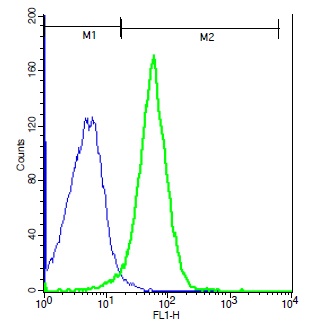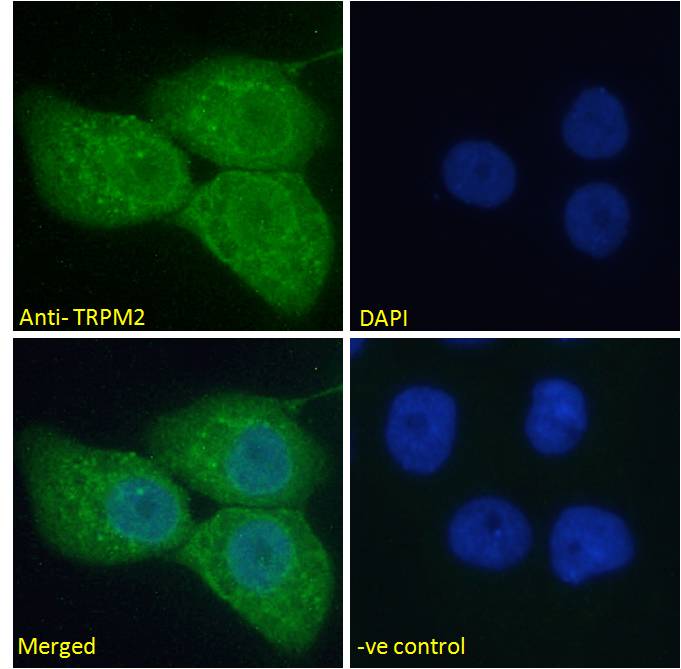TRPM2 antibody [N1N2-2], N-term
GTX112252
ApplicationsWestern Blot, ImmunoHistoChemistry, ImmunoHistoChemistry Paraffin
Product group Antibodies
TargetTRPM2
Overview
- SupplierGeneTex
- Product NameTRPM2 antibody [N1N2-2], N-term
- Delivery Days Customer9
- Application Supplier NoteWB: 1:500-1:3000. IHC-P: 1:100-1:1000. *Optimal dilutions/concentrations should be determined by the researcher.Not tested in other applications.
- ApplicationsWestern Blot, ImmunoHistoChemistry, ImmunoHistoChemistry Paraffin
- CertificationResearch Use Only
- ClonalityPolyclonal
- Concentration1.38 mg/ml
- ConjugateUnconjugated
- Gene ID7226
- Target nameTRPM2
- Target descriptiontransient receptor potential cation channel subfamily M member 2
- Target synonymsEREG1, KNP3, LTRPC2, LTrpC-2, NUDT9H, NUDT9L1, TRPC7, transient receptor potential cation channel subfamily M member 2, estrogen-responsive element-associated gene 1 protein, long transient receptor potential channel 2, transient receptor potential channel 7, transient receptor potential melastatin 2
- HostRabbit
- IsotypeIgG
- Protein IDO94759
- Protein NameTransient receptor potential cation channel subfamily M member 2
- Scientific DescriptionThe protein encoded by this gene is a calcium-permeable cation channel that is regulated by free intracellular ADP-ribose. The encoded protein is activated by oxidative stress and confers susceptibility to cell death. Several alternatively spliced transcript variants of this gene have been described, but their full-length nature is not known. [provided by RefSeq]
- Storage Instruction-20°C or -80°C,2°C to 8°C
- UNSPSC12352203
References
- MacGlashan D Jr. Expression profiling of human basophils: modulation by cytokines and secretagogues. PLoS One. 2015,10(5):e0126435. doi: 10.1371/journal.pone.0126435Read this paper








